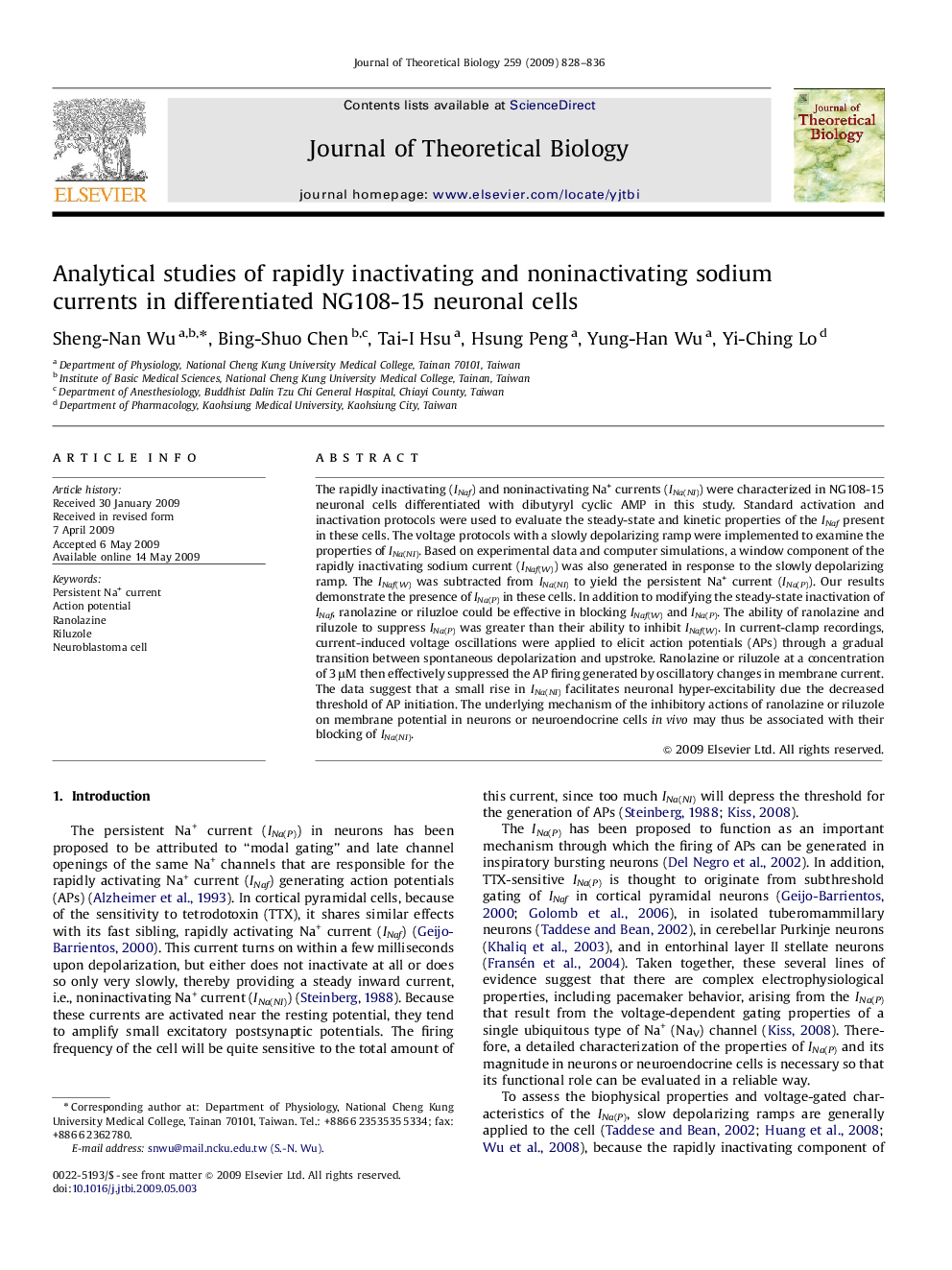| Article ID | Journal | Published Year | Pages | File Type |
|---|---|---|---|---|
| 4497953 | Journal of Theoretical Biology | 2009 | 9 Pages |
Abstract
The rapidly inactivating (INaf) and noninactivating Na+ currents (INa(NI)) were characterized in NG108-15 neuronal cells differentiated with dibutyryl cyclic AMP in this study. Standard activation and inactivation protocols were used to evaluate the steady-state and kinetic properties of the INaf present in these cells. The voltage protocols with a slowly depolarizing ramp were implemented to examine the properties of INa(NI). Based on experimental data and computer simulations, a window component of the rapidly inactivating sodium current (INaf(W)) was also generated in response to the slowly depolarizing ramp. The INaf(W) was subtracted from INa(NI) to yield the persistent Na+ current (INa(P)). Our results demonstrate the presence of INa(P) in these cells. In addition to modifying the steady-state inactivation of INaf, ranolazine or riluzloe could be effective in blocking INaf(W) and INa(P). The ability of ranolazine and riluzole to suppress INa(P) was greater than their ability to inhibit INaf(W). In current-clamp recordings, current-induced voltage oscillations were applied to elicit action potentials (APs) through a gradual transition between spontaneous depolarization and upstroke. Ranolazine or riluzole at a concentration of 3 μM then effectively suppressed the AP firing generated by oscillatory changes in membrane current. The data suggest that a small rise in INa(NI) facilitates neuronal hyper-excitability due the decreased threshold of AP initiation. The underlying mechanism of the inhibitory actions of ranolazine or riluzole on membrane potential in neurons or neuroendocrine cells in vivo may thus be associated with their blocking of INa(NI).
Related Topics
Life Sciences
Agricultural and Biological Sciences
Agricultural and Biological Sciences (General)
Authors
Sheng-Nan Wu, Bing-Shuo Chen, Tai-I Hsu, Hsung Peng, Yung-Han Wu, Yi-Ching Lo,
